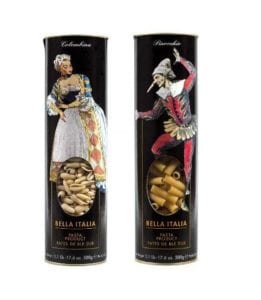Saffron, also called the crocus is a perennial herbaceous plant that blooms in autumn: the flowers have a beautiful purple color, with shades ranging from mauve to purple. The plant reaches a modest height of 15-30 cm and a stylus with three points emerges from each flower, each of which ends with a stigma of 20-30 mm. It is precisely the stigmas that are collected and dried for the production of saffron. The plant is a triploid, with three copies of each of the eight chromosomes, sterile, the result of a selection process lasting thousands of years.
The Production
The flowers cannot reproduce through seeds, the hand of man is required to use the corms, the underground bulbs that accumulate starch and reserve substances, dug at the end of the season, divided and replanted. The optimal cultivation soil is clayey-calcareous, well drained and rich in organic material. The ideal climate is one with rainy springs and dry summers; good rainfall before flowering increases the yield of the crop. The plant loves direct sunlight, is damaged by persistent humidity, is preyed upon by rabbits, mice and birds, greedy for bulbs, and is subject to attack by various parasites.
The crocus can survive even cold winters and short snow cover, as long as temperatures do not drop below -10 ° C. The bulbs are planted in summer and remain dormant until the end of August, when with the first rains they begin to vegetate. The new shoots bloom in early autumn and generally bloom in mid-October. Flowering occurs at dawn and the flower withers very quickly: the crocuses of a plot bloom in a window of about two weeks. The collection of flowers is done by hand, with great timing and speed, from sunrise until 9-10 in the morning, to avoid the complete opening of the flower and the breaking of the stigma.

Why Is It So Expensive
The stigmas are taken from the freshly picked flowers, an extremely delicate operation that requires great care and dexterity, to avoid breaking the precious filaments. The collected stigmas are dried, a critical operation on which the quality of the saffron depends: the stigmas must be sufficiently dehydrated in order to prevent any fermentation process but must in any case remain soft and elastic. Drying can be done in rooms kept at an adequate temperature, in the sun or, as is increasingly the case, using electric ovens in order to make the process faster and with results that can be more easily standardized.
The color must be a beautiful purple red, bright and vibrant, with a strong and intense aroma. About 100,000 flowers are needed to produce one kg of saffron in threads; with an average of four bulb flowers, about 25,000 bulbs are needed, with the commitment of an area of about 1000 square meters and approximately 420 hours of labor. The yield is about 10 milligrams of fresh saffron per flower, corresponding to about 7 milligrams of dry saffron. At this point it is easy to understand why the cost of this spice is so high and why cultivation has always been the prerogative of small family-run businesses, in often marginal territories and lands.
Saffron produced in Italy is a very high quality product, often sold at much higher prices than saffron that comes from Iran or Morocco. The reasons for this price lie in several factors: first of all, the cost of labor. Fortunately, in Italy workers are entitled to fair wages and have fundamental rights, in countries where the rights of workers are less developed there are episodes of exploitation of agricultural laborers.
The cultivation of saffron requires a lot of manpower, in particular in the harvesting and withering operations, which cannot be mechanized. Italian saffron is a product that offers greater ethical guarantees. Italian saffron is also often produced with great attention to quality: the flower is harvested before it opens, in the morning, the pistils (or more correctly stigmas) are cleaned and dried within the day. It is a very demanding job, which allows you to maintain all the qualities and aroma of the spice. Industrial saffron, on the other hand, is collected on huge surfaces, often the stigmas are left in the sun for days and lose most of their nutritional and organoleptic qualities. Only in this way can large companies afford to sell saffron at very low prices. The difference between industrial saffron in powder form and the purest saffron produced in Italy can be felt immediately on the nose and on the palate.
Taste Italian Saffron: Buy Now!
No Results Found
The page you requested could not be found. Try refining your search, or use the navigation above to locate the post.




